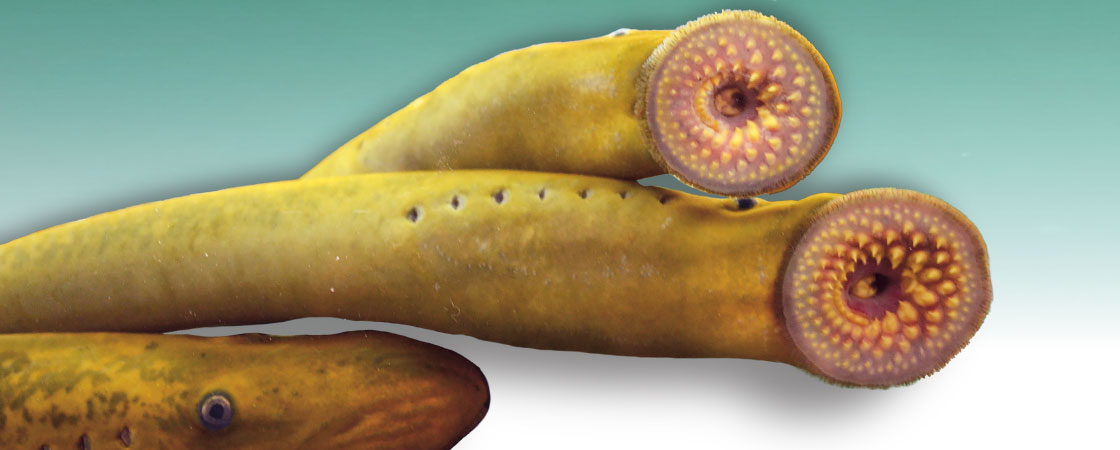Courtesy of Beatrice Skaggs
Beatrice Mertz
Eleven-year-old Beatrice Mertz held the slimy creature in her hand. Its long, snakelike body wriggled and jerked about. Some 100 razor-sharp teeth gleamed in its gooey mouth. Beatrice grabbed her knife and, in one swift motion, severed the creature’s head. She breathed a sigh of relief.
It was the summer of 1941, and Beatrice was working on her mom’s fishing boat on Lake Huron, one of the five Great Lakes along the border between the United States and Canada. The creature she had just killed was a fish called a sea lamprey. Like some sort of marine vampire, a lamprey attaches itself to a fish, drills a hole into its flesh, and slurps down its blood.
It was Beatrice’s job to get rid of as many lampreys as possible. This was important, if unpleasant. At the time, hundreds of thousands of sea lampreys were invading not just Lake Huron, but all of the Great Lakes. And they were killing the fish that Beatrice’s mom was trying to catch.
“When a fish came into the boat and there was a lamprey on it, my mom would say, ‘Beatsie, you take care of that lamprey!’” Beatrice remembers. “She would never allow a live lamprey to go back into the water.”
The lampreys were not just posing a threat to the livelihoods of fishers like Beatrice’s mom. They were on the path to causing catastrophic damage to the ecosystem.
Could anything be done?

